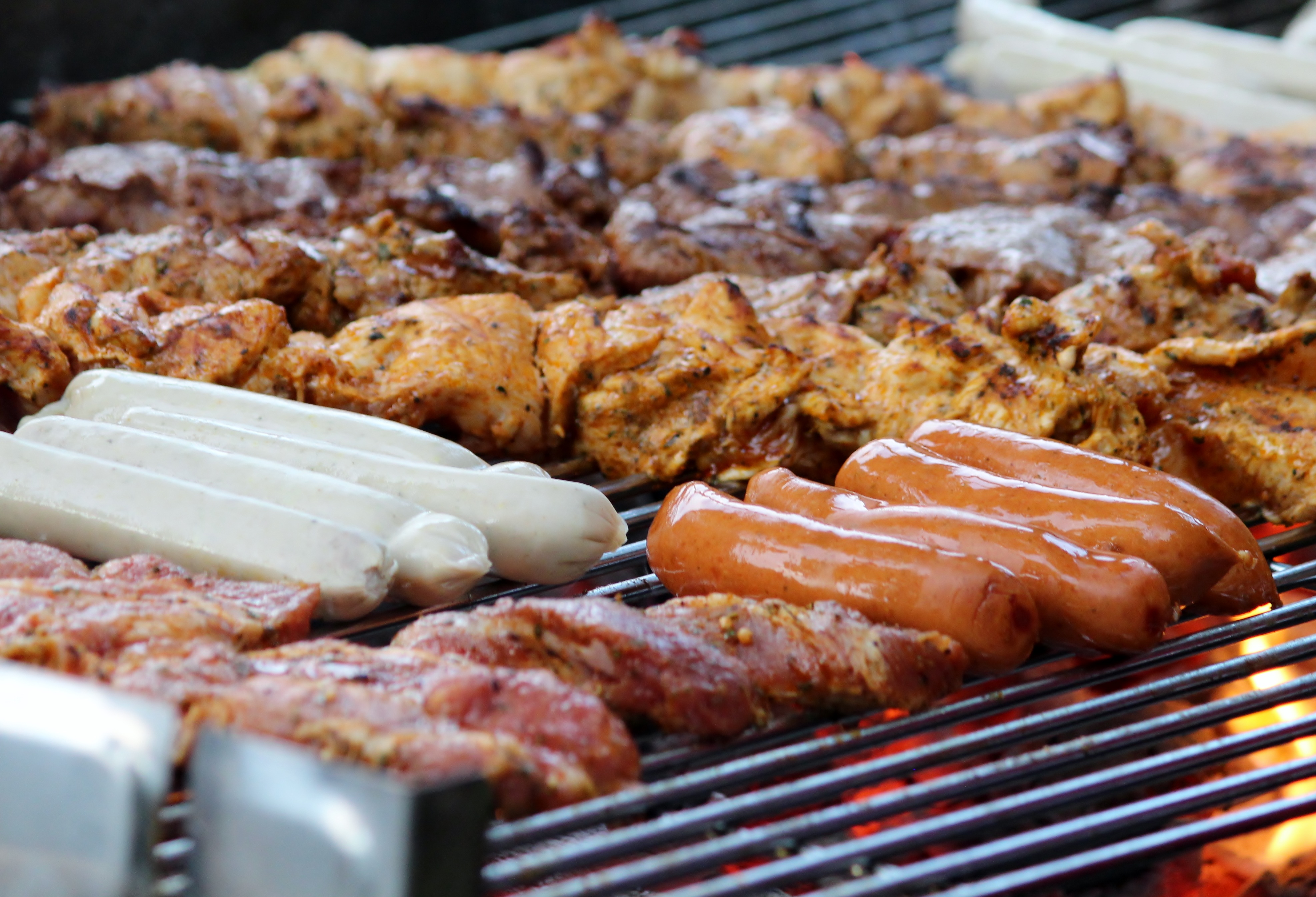It’s the season of jerking again. After work, find a barbecue restaurant, call a few friends, point on the skewers, and then a few bottles of beer, do not mention how cozy.
However, there have been claims that when jerking off, burnt food can produce harmful substances, which can cause cancer if eaten.
Is this true? Can burnt food really cause cancer? Can you still enjoy jerking off?
Does burnt food produce harmful substances?
I am sorry to tell you that under high temperature, burnt food does produce some harmful substances.
The most common ones are two: one is benzo(a)pyrene and the other is heterocyclic amines.
polycyclic aromatic hydrocarbon (PAH)
Polycyclic Aromatic Hydrocarbons (PAH or PAHs for short), also known as polycyclic aromatic compounds or polycyclic aromatic hydrocarbons, this family is very large, there are more than 100 members, the most famous is benzo(a)pyrene.
Benzo(a)pyrene, also known as benzo(a)pyrene. Benzo(a)pyrene is a polycyclic aromatic hydrocarbon with five benzene rings. The International Agency for Research on Cancer (IARC) categorizes benzo(a)pyrene in the first group of carcinogens (which are already clearly carcinogenic to humans).
Barbecued foods, including grilled chicken legs, may indeed produce benzo(a)pyrene, a carcinogen, at high temperatures due to the high temperature. Benzo(a)pyrene in barbecued food products mainly comes from the heat reaction of fat, which produces benzo(a)pyrene at temperatures above 200 degrees Celsius, and the higher the temperature, the more benzo(a)pyrene is produced.
Heterocyclic Amines
Polycyclic amines (heterocyclic amines, abbreviated as HCAs or HCAs), also known as heterocyclic amines, are teratogenic and carcinogenic.
Several factors contribute to the formation of HCAs: food type, cooking method, temperature and time.
- Food type: cooked meat products and proteins from other sources (milk, eggs, tofu, organ meats: e.g., liver).
- Cooking method: Cooking meat at very high temperatures during deep-frying, sautéing, and grilling produces the greatest amount of HCAs.
- Temperature and time: When meat or other foods are boiled, grilled or fried, the higher the temperature, the more polycyclic amines are produced; conversely, the lower the temperature, the lower the amount of polycyclic amines produced, and the amount of polycyclic amines depends on the temperature at which the food is cooked.
Is it still safe to eat barbecue?
Everyone’s main concern is whether they can still enjoy jerking off.
The food is burnt, it must have been scorched at a very high temperature. Proteins, fats and carbohydrates in food are easily generated at high temperatures to produce benzo(a)pyrene and heterocyclic amines, and the higher the temperature and the longer the time, the more carcinogens are generated.
Therefore, from the nutrition and health point of view, it is recommended that you should still try not to eat or eat less barbecue food, especially do not eat too charred food (besides, it is not delicious).
However, this does not mean that eating barbecue eat necessarily carcinogenic, nor does it mean that barbecue is completely inedible.
First of all, although the benzo(a)pyrene and heterocyclic amines in barbecue are carcinogenic, this is just the strength of the evidence, and does not mean that eating a little barbecue will necessarily make people get cancer.
In fact, the Joint Food and Agriculture Organization of the United Nations/World Health Organization Expert Committee on Food Additives (JECFA) assessed the dietary intake of benzo(a)pyrene in humans to be of low health concern .
Secondly , the amount of benzo(a)pyrene and heterocyclic amines produced by barbecue in general is not much. It is important to realize that all the carcinogens in barbecued food are much less than even smoking a cigarette.
Therefore, barbecue and charred food is not as horrible as the legend, and it is still okay to eat properly.
How to reduce benzo(a)pyrene in barbecue?
Benzo(a)pyrene in barbecued food can be reduced as long as you pay attention to the proper methods.
First of all, the barbecue should not be too long or too hot. When barbecuing, it is also necessary to avoid the food coming into contact with the flame, and it is better to keep the heat source on the top.
When barbecuing, there will be a lot of oil dripping into the fire when the food and the fire are in direct contact, resulting in smoke, and the resulting benzo(a)pyrene will be attached to the surface of the food. When the food is farther away from the fire, the oil dripping down is very little, and the benzopyrene is much less. So, try to remove as much smoke as possible when grilling. For example, you can raise the grill or just fan the smoke away.
Some people have done experiments, grilled sausage, if the sausage and fire contact, the finished product in the benzo(a)pyrene content of 10.7 micrograms per kilogram; if the barbecue grill is elevated, so that the sausage and the fire 5 centimeters apart, then this value will be reduced to 0.67.
Next, choose foods that produce less benzo(a)pyrene.
Generally, meat and fish such as chicken and pork produce more benzo(a)pyrene and heterocyclic amines when barbecuing, while eggs and tofu and vegetables produce less benzo(a)pyrene and heterocyclic amines. So, don’t just eat meat when barbecuing, eat some with some vegetables as appropriate.
In addition, try to choose the food grilled with skin, such as sweet potatoes, corn with skin, bivalve shellfish and unpeeled crustacean seafood, because the outer skin can prevent benzo(a)pyrene infiltration, and eat when the skin can be removed. This is also convenient if wrapped in a layer of tinfoil while grilling.
Finally, eating a balanced and varied diet along with barbecuing, such as adding some vegetables and fruits, can also reduce the possible risks.

